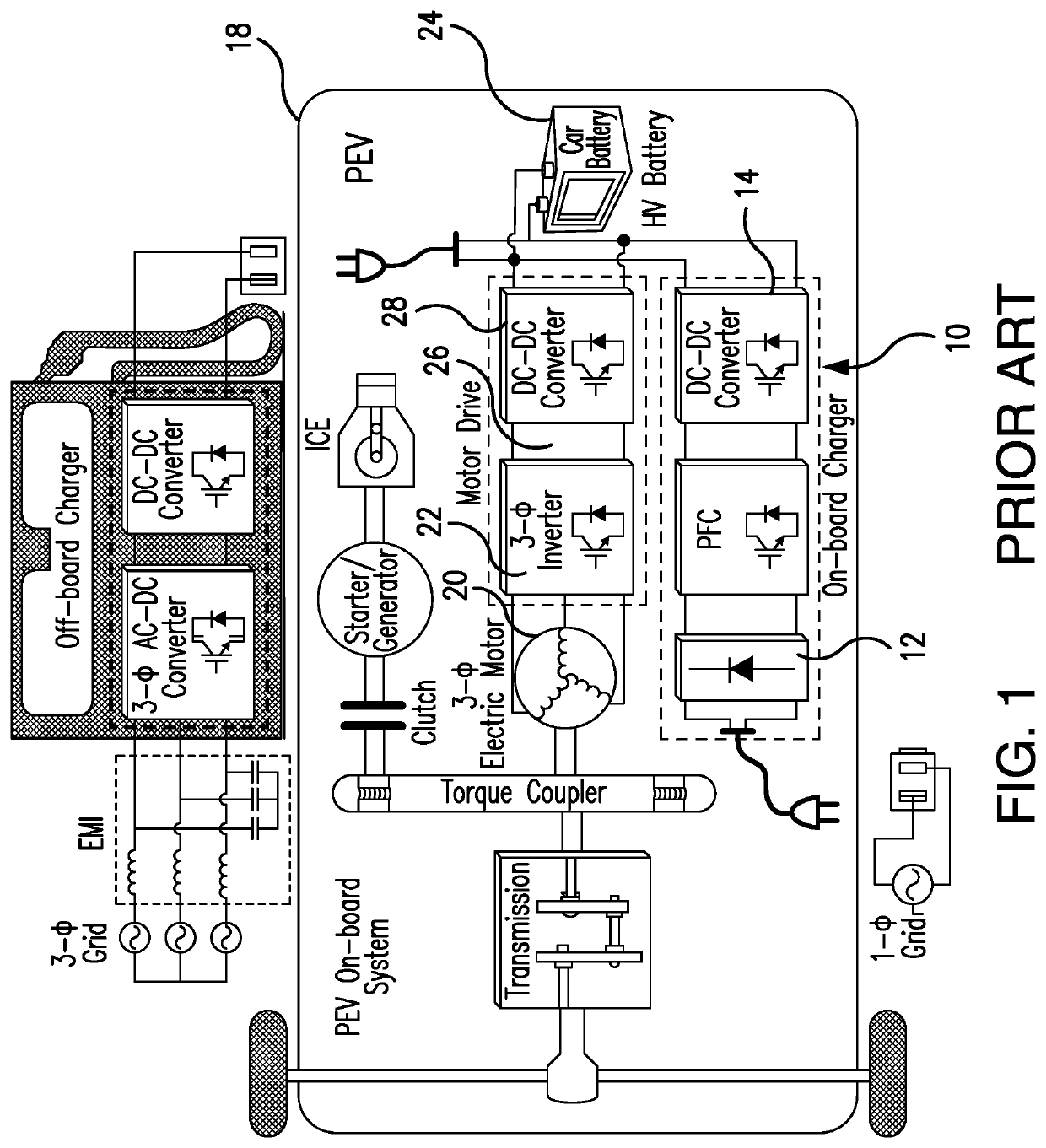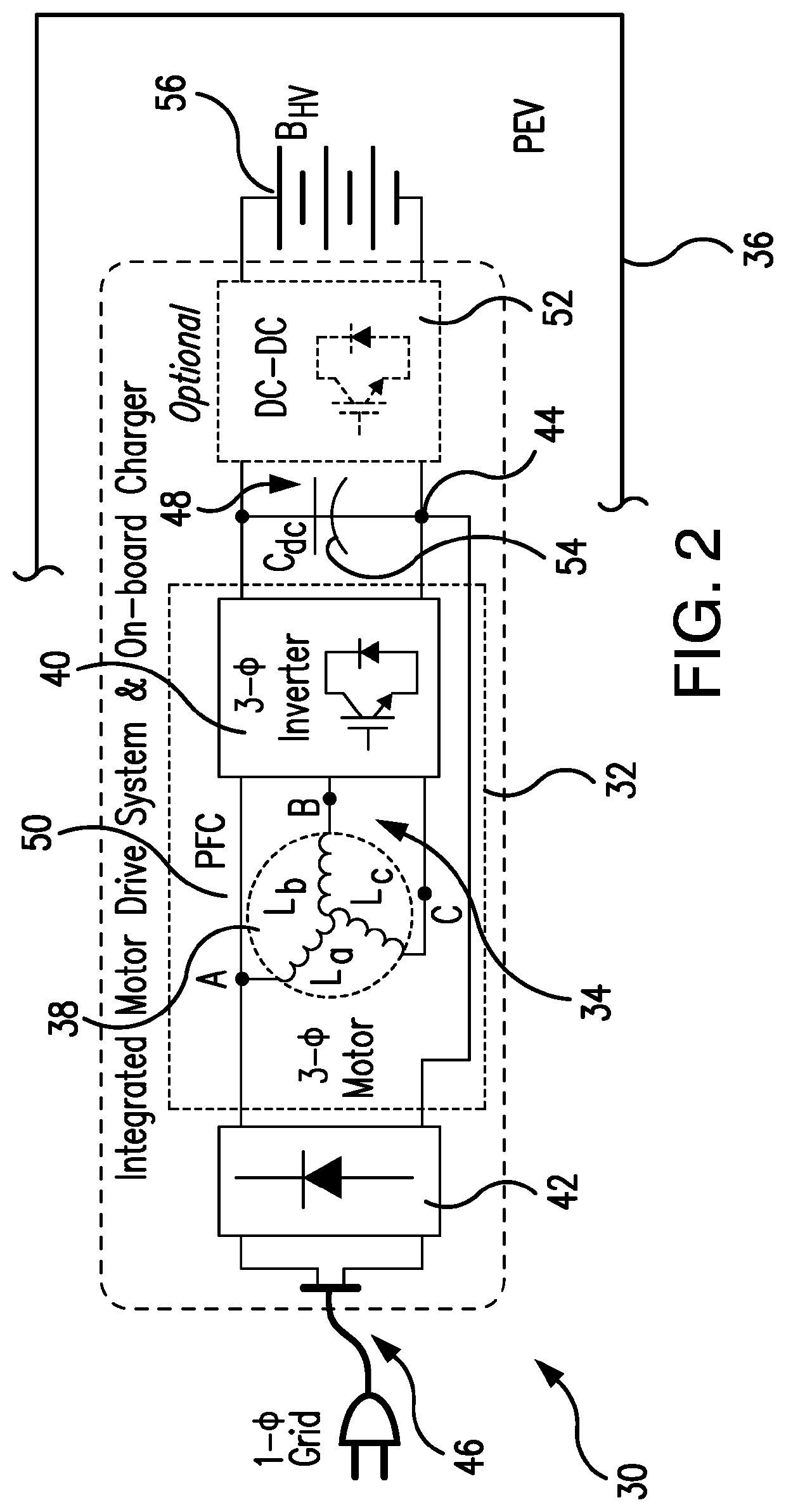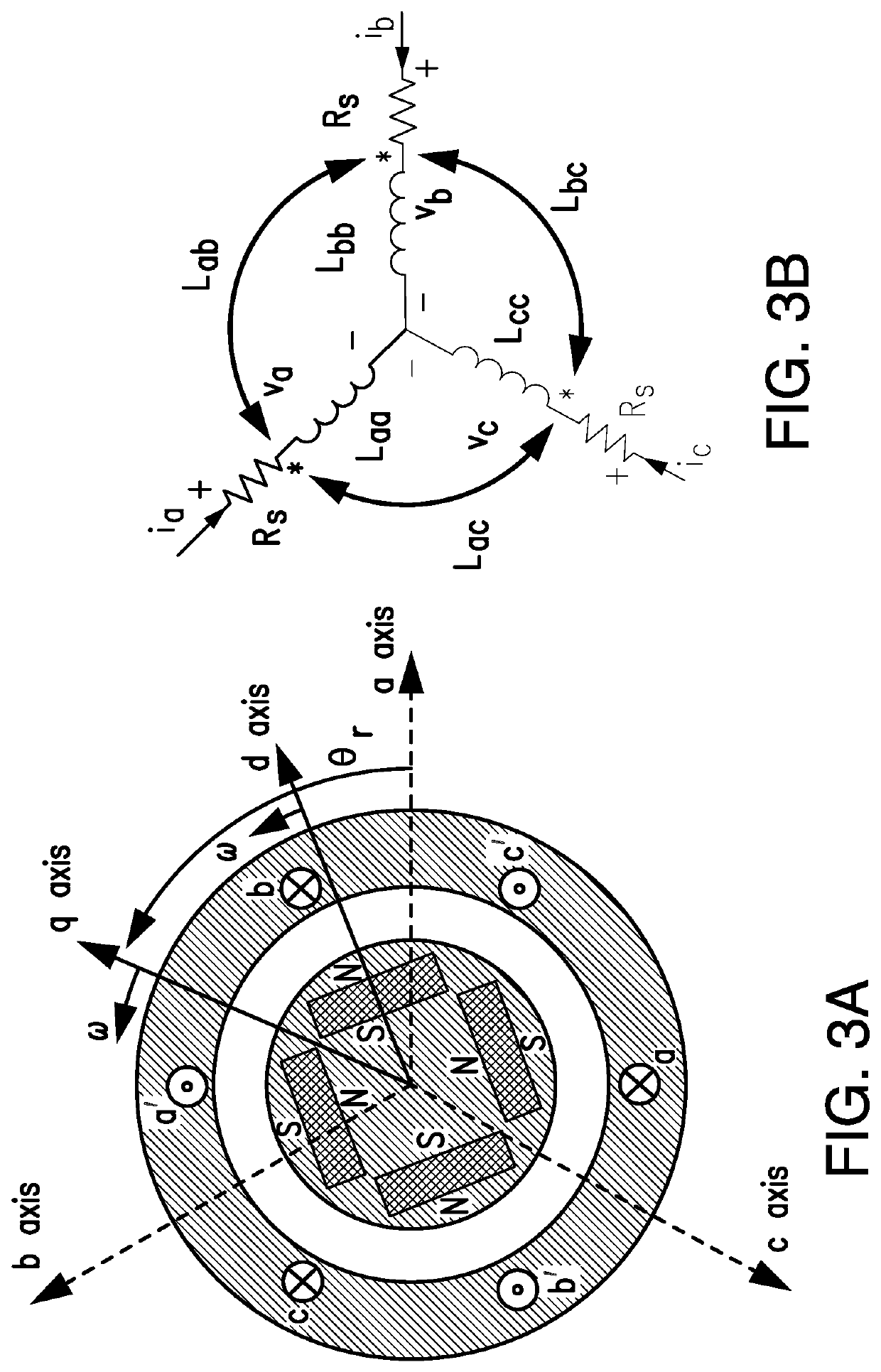Integrated onboard chargers for plug-in electric vehicles
a technology for electric vehicles and chargers, applied in charging stations, propulsion using engine-driven generators, transportation and packaging, etc., can solve the problems of reducing the efficiency of electric vehicles, so as to achieve effective input current ripple cancellation and simple design and operation.
- Summary
- Abstract
- Description
- Claims
- Application Information
AI Technical Summary
Benefits of technology
Problems solved by technology
Method used
Image
Examples
Embodiment Construction
)
[0123]The powertrain for the plug-in electric vehicle using the subject system may include either a single high-power battery pack as the energy storage sub-system (ESS) or a number of ESSes, as well as one or a number of Propulsion machine-Inverter Groups. Each Propulsion machine-Inverter Group is built with a Propulsion Inverter followed by a Propulsion machine for electrical propulsion of the plug-in electric vehicle.
[0124]The electric propulsion is attained through at least one Propulsion machine which may include various propulsion machines, such as, for example, induction machines, permanent magnet machines, synchronous machines, switched reluctance machines, or other potential electrical machines.
[0125]The function of the Propulsion Inverters is to drive the Propulsion machine according to the speed command received from a driver. Required torque value is generated from an error between the speed command and the actual speed. Both values are supplied as inputs to a maximum e...
PUM
 Login to View More
Login to View More Abstract
Description
Claims
Application Information
 Login to View More
Login to View More - R&D
- Intellectual Property
- Life Sciences
- Materials
- Tech Scout
- Unparalleled Data Quality
- Higher Quality Content
- 60% Fewer Hallucinations
Browse by: Latest US Patents, China's latest patents, Technical Efficacy Thesaurus, Application Domain, Technology Topic, Popular Technical Reports.
© 2025 PatSnap. All rights reserved.Legal|Privacy policy|Modern Slavery Act Transparency Statement|Sitemap|About US| Contact US: help@patsnap.com



